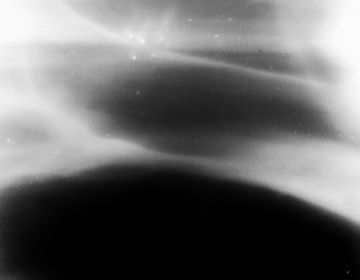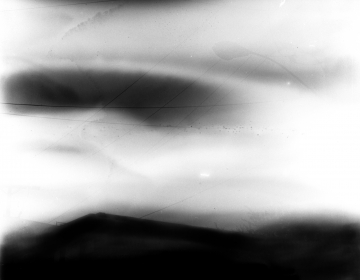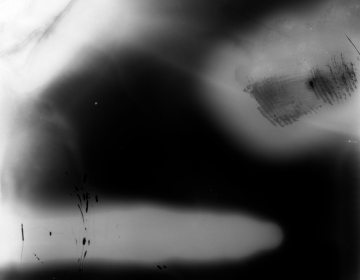Since the beginning of photography, photographers have used the camera in ways to capture that which the human eye is “normally” incapable of visually comprehending. From Eadweard Muybridge’s quest to prove a horse’s gallop to Hiroshi Sugimoto’s long exposures of movie theaters, the camera often functions as an instrument of discovery and experimentation into our surrounding world. But what if the subject of an image does not physically exist in our world? What if it is yet to be realized? How then can the camera investigate?
In the late 1970s in a scientific report on the effects of carbon dioxide, MIT professor Jule Charney first used the term “climate change,” a term that has since evolved to reference specifically anthropogenic changes to our climate. While these changes are occurring at an alarming exponential rate, a 2016 Pew Research Center study showed that 20% of adults in the United States do not believe there is sufficient evidence of climate change and a further 38% believe that any changes are a result to natural causes (scientifically known as “climatic changes”). All of which prompts the question: how much destruction needs to happen for these individuals to believe in climate change? When will climate change stop being an abstraction to them?
While communicating with several friends in the U.S. Virgin Islands after Hurricanes Irma and Maria, they often talked about just how much water was everywhere. Evidence suggests that the increase in hurricane destruction this past fall is a result of rising and warming sea levels. Yet even without this increased threat, by as soon as 2100, many of our country’s coastlines will disappear and large amounts of cities like Boston, New Orleans, and Philadelphia will be under water.
Using projections created by Climate Central, I selected DC intersections in Anacostia, Georgetown, and the National Mall that will be flooded in 2100. After photographing cityscapes at each area, I soaked the unprocessed film in boiling water from the Potomac River for up to 83 hours (the number of years between now and 2100). Afterwards, I developed the film and scanned the negatives to create digital inkjet prints.
The uncertainty of this project echoes the uncertainty of climate change. What will survive and what will be lost? What will be left at the end of it all?


